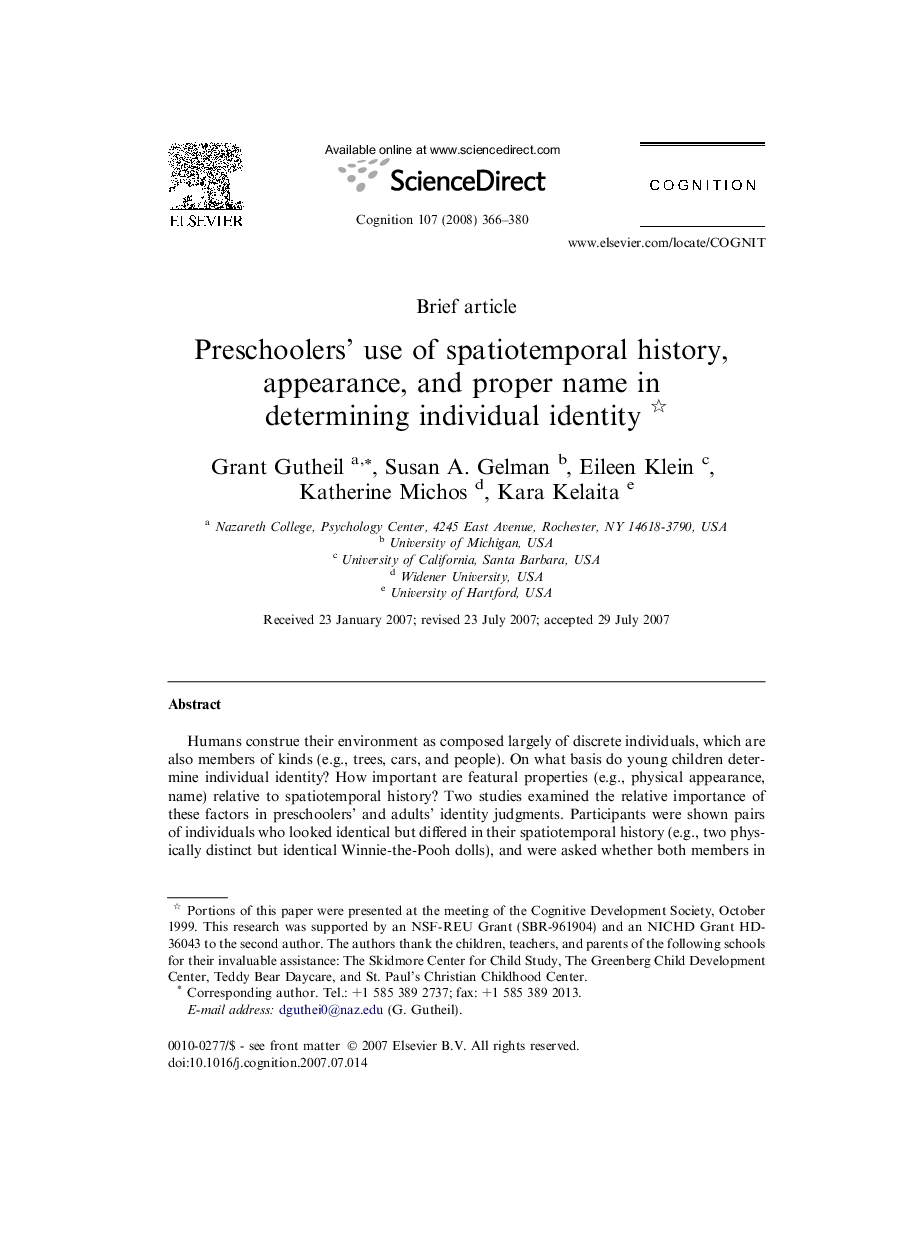| Article ID | Journal | Published Year | Pages | File Type |
|---|---|---|---|---|
| 927352 | Cognition | 2008 | 15 Pages |
Humans construe their environment as composed largely of discrete individuals, which are also members of kinds (e.g., trees, cars, and people). On what basis do young children determine individual identity? How important are featural properties (e.g., physical appearance, name) relative to spatiotemporal history? Two studies examined the relative importance of these factors in preschoolers’ and adults’ identity judgments. Participants were shown pairs of individuals who looked identical but differed in their spatiotemporal history (e.g., two physically distinct but identical Winnie-the-Pooh dolls), and were asked whether both members in the pair would have access to knowledge that had been supplied to only one of the pairs. The results provide clear support for spatiotemporal history as the primary basis of identity judgments in both preschoolers and adults, and further place issues of identity within the broader cognitive framework of psychological essentialism.
